Maybe there will be a lacy veil of high atmosphere clouds dithering away to an iridescent nothing.
Whatever’s there, it’s always a moment to stop and to marvel.
And I do something like this everyday.

A lot of us do.
Floating canyons, roving scouts made of nothing more than moisture.
A whole world of beauty, and it irises out in our peripheral vision.

I went for long, meaningful walks and imagined myself tiny under the sky.
This annoyed almost everyone, but I didn’t mind.
Clouds in games seemed particularly interesting, in fact.

Here was nature entirely manufactured and yet entirely convincing.
If the clouds weren’t there, we’d feel their gaping absence.
But when they are there, we struggle to see them.

I wanted to know more about all this stuff.
I wanted to know about clouds, and why they should bewitch us.
And I wanted to know if all the skies I’d been looking at in games made sense.
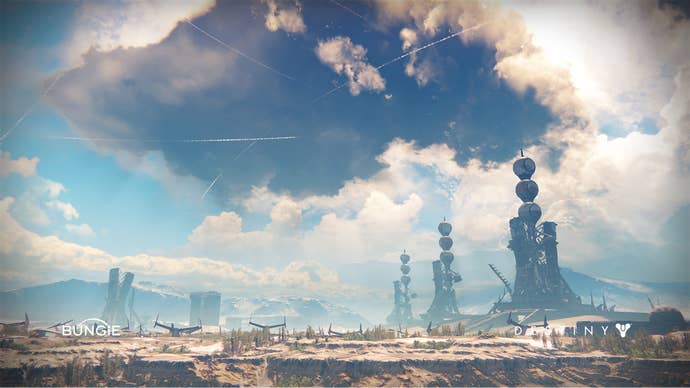
So, following the impulse of every good cloudspotter, I went straight to the top.
Pretor-Pinney founded the Cloud Appreciation Society in 2005, so it’s just shy of its 20th birthday.
Pretor-Pinney often makes it sound as if the founding of the society was a bit of a lark.
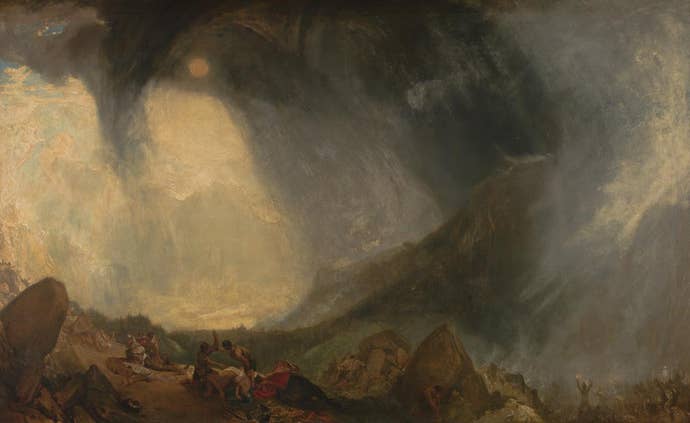
I wanted the official verdict.
But I also wanted something more, something I couldn’t really put a name to.
Listen: The Cloud Appreciation Society’s office at Pretor-Pinney’s home is basically perfect.
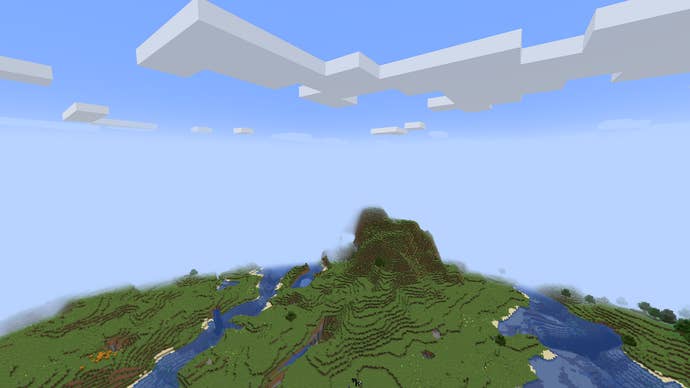
It’s one of those lovely baggy kind of rooms you feel you could just sink into.
It makes sense because Pretor-Pinney started a degree in physics before pivoting to philosophy - and eventually graphic design.
And it makes sense because of something Pretor-Pinney tells me about clouds and how to talk about them.

“Because if it’s just the science, it becomes dry.
And that’s, of course, the last thing you want from a cloud.
But if it is just about the art and the emotion, it becomes untethered.

And it becomes out of your psychological grasp.
It just wafts off into the air.”
These were originally employed for notes in the margins of books.

Here, the hand fills a wall and the finger is directed, of course, at the heavens.
So, art and science combined.
Or, to use another of the possible names for that: video games.
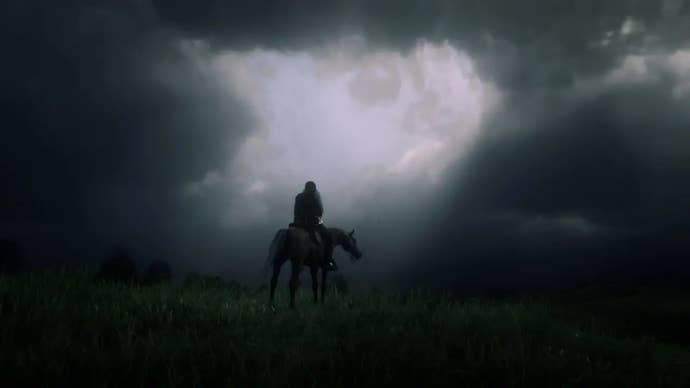
And where better to start than with someone who actually rides a cloud?
But what kind of clouds?
I set up my laptop with all the pictures of clouds in games I’ve brought to show Pretor-Pinney.
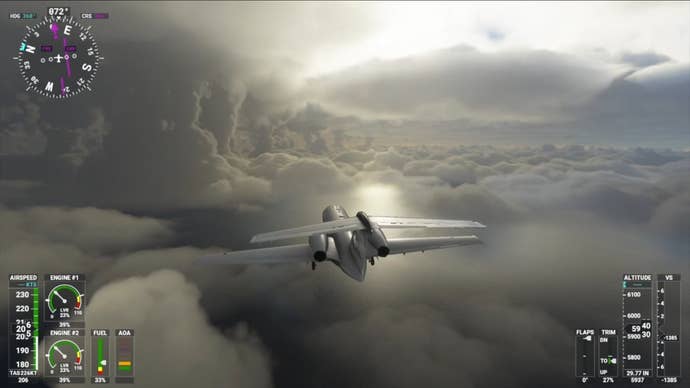
Anyway, Pretor-Pinney squints a bit at Lakitu on their cloud.
“This is a Cumulus cloud,” he says, before leaning in.
“Interestingly, it’s missing a couple of important elements.

It should really have a flatter base than that.”
“I’m gonna be very critical about this if you’re not careful.”
Like the Simpsons cloud?

“That’s a classic.
As the air rises, it expands, and as any gas expands, it also cools.
“But it’s a certain temperature when that phase change happens,” Pretor-Pinney explains.

“So you get a base.
The droplets are in that jot down of air.
And they’re surrounded by the ambient air around, which doesn’t have droplets in it.”

He pauses and sits back and stares at Lakitu, riding air that other air has rendered sharply visible.
“Of course, he would not be able to be sitting on that cloud.”
He wouldn’t, but we’ve all thought of doing that, right?
Children think about walking on clouds, singers sing about it.
Don’t we all do that?
“And this is the paradox.
The paradox of a cloud is it looks like a thing, especially a Cumulus cloud.
It looks like a thing!
But it’s not a thing.
It’s a collection of tiny, tiny things.
It’s an array, it is a distribution of miniscule droplets.
And so they stay up.
Pretor-Pinney actually talks about this in his book.
He talks about the weight of clouds, even Cumulus, the fluffy little fellows kids like to draw.
This sounds completely ridiculous.
But it’s not.
Clouds have weight - they do in thought experiments, anyway - and they’re often heavy.
“80 elephants is the weight that I give as a rough estimate of the weight of that water.
And it’s very surprising, it’s part of the paradoxical nature of of these phenomena.
You think: wait a second, 80 elephants?
How’s it staying up in the sky?
And you know, then you think, okay, 80 elephants, but they’re tiny droplets?
And actually, that moisture is there in the air anyway.
It’s just in the air in the form of a gas.
It’s only when you bring it together into droplets that you see it.
In other words, thank you Lakitu, because a Cumulus is the perfect introduction to clouds.
“Yes, exactly,” agrees Pretor-Pinney.
“And the challenges in representing them.”
He points at the screen.
“There’s something comical about that cloud, and there’s something light-hearted.
I always say the Cumulus cloud, the Simpsons sky, it’s the most light-hearted cloud.
And those crisp edges are a result of this artificial introduction of air, from this rising thermal.
It comes rising up and pushes out this different bang out of air up here, which is drier.
The next cloud I show Pretor-Pinney is also a Cumulus, and it’s also a Mario Cumulus.
Super Mario Bros. 1-1.
“Yes, we’ve got an 8-bit display there,” he says.
“But it’s actually a bit more of a representative cloud this time.
“You may be dealing with your 8-bit graphics, but they put more effort here into the cloud.
This Cumulus has a shadow to his base.
Having a shaded underside to a Cumulus cloud is another of its defining visual characteristics.
“And so you’re ticking three boxes here, really.”
He counts off on his fingers.
“You’ve got the flattish base.
You’ve got a shaded underside.
And you’ve got a top that is reminiscent of cauliflowers mounds.
It’s the visual manifestation of that rising convection column.”
This is fascinating to me.
Is this noticing versus memory?
“Yeah, you don’t get that by accident,” says Pretor-Pinney.
“I think they would have had to look.”
It turns out that this is something Pretor-Pinney has thought about a lot.
The act of seeing, of noticing.
“Cloud-spotting artists is a game I like to play when you’re walking around the gallery.
So who’s paying attention?
The Hay Wain Constable.
“Yeah, he’s paying attention,” Pretor-Pinney laughs.
“Okay, possibly too much attention.”
It comes down to a matter of intent.
And he would do these fast sketches, writing down the conditions.
And it was all an analytical process.
“But his cloud studies are.
“He said, “We do it for plants and animals.
Maybe we could do it for clouds”, you know?
Radical idea, captured everyone’s imaginations.
Constable was aware of that.”
But Constable wasn’t the only painter thinking about clouds.
Clouds in Turner paintings mass and flood the sky with light and darkness.
They frequently spiral across space: into the sea, into the mountains, into the earth.
And Turner has his modern equivalent in video games.
After Mario 1-1, my next sky image takes us forward about thirty-odd years.
It’s Bungie, and it’s Destiny.
Games are now gigantic undertakings that cost millions and employ hundreds of artists and designers.
And skies are no longer simple sprites arranged behind the moving 2D character, but skyboxes.
That term: say it aloud.
So magical in its weird, blunt utilitarianism: a box to hold the sky.
And nobody’s boxes hold the sky better than Bungie’s.
Bungie’s skyboxes are Romantic in the same way Turner is Romantic.
But does it all make sense as a sky?
Is it Turner through and through, or is Constable present as well?
But not necessarily how they’ve been combined together.”
The problem lies with the cloud that dominates the sky: the cloud with the wide, dark base.
“A cloud with a dark base like this is something you do see,” Pretor-Pinney says.
“It’s the dark base of a tall, tall cloud.
Because there’s a relationship between the tallness of a cloud and its likelihood to rain.
And generally speaking, that’s the beginning of the precipitation.”
That’s all fine.
“I mean, you’ve got here Stratocumulus clouds.
That all causes chaotic turbulence.
“So that’s fine.
But that the positioning of this one here, this dark patch, looks to me…
I know it’s in the foreground, but it still feels much more elevated than those are.
It feels very wrong to me.”
Wrong, but Turner-wrong?
The weather as sheer visual impact.
“Very similar,” agrees Pretor-Pinney.
“They got all the right bits, just not put together in the right way.”
And why is that?
“They’re searching for drama,” he nods.
“And certainly, inherent in our elemental understanding of the sky is: dark sky means drama.”
“I’m gonna say these are Altocumulus and not Cirrus,” he decides at length.
It’s because Cirrus is, by its essence, edgeless.
It’s fluid strokes.
So I would love to see the Minecraft designers attempt a Cirrus.
It’d be fascinating.
They must have glass in the game?
Frosted glass would be the elements they’re working with.”
“Well, what will the changes be to cloud formations in a changing global climate?”
Because the feedback effects of the clouds on temperatures at the ground are huge, and they’re complex.
The low clouds will have a cooling effect.
And that’s because they basically reflect a lot of light.
So you get these marine Stratocumulus clouds, and they have this cooling effect.
Do you get more clouds?
Or do you get fewer clouds overall?
Overall, the effect of the clouds is one of slightly cooling things, on average.
If you took away the clouds, we would have a massive rise in the temperatures.
Generally speaking, it’s incredibly hard to untangle.
Is it a source of pleasure and comfort now?
Or is that under challenge?
It’s more of a kind of gentle shift in attitude that I’m wondering about.
To engage with the sky is to engage with a moment of meditation almost.
It moves at a pace which is slower than our pace.
And so it encourages you to slow down.
And it encourages you to find beauty in the mundane everyday around you.
But now there is also this kind of nagging of anxiety.
Which is eco anxiety.
I’m grappling in my mind where that takes us.”
And it’s something that pilots are fully aware of.
They obviously love the beauty of being able to see the cloudscape.
They have the best view from the office window of any profession really.
They can’t just avoid the whole thing.
They will be definitely fully aware of the these kind of spaces between cloudforms.”
He looks at Disjunction again.
An appraising light in the eyes.
“So: cloud layer below, cloud layer above.
That’s kind of what we’ve got going on here.
Do you think, I mean, do you think that brightness in the distance is clearer air?”
Elsewhere, one of my favourite games of all time does surprisingly well.
“And I feel like they’ve done pretty well here,” he says.
“A little bit too dark?
And they’re just desperate to freeze, but it takes getting really quite cold before they do.
But this is made of droplets still.
And so that means it’s got a solid appearance.
So when the sun is on the far side it’s going to have a shaded side facing you.
So they got that right.
And also, you’ve got the sunlight shining through the edges, which is exactly right.
So you have this silver lining or golden lining to the cloud.
And you’ve got slight extra colouration around there.
The sort of golden colours, you might even have some pinks coming in.
And everyone says, you know, clouds have a silver lining.
Often they actually have a multi-coloured lining.”
Pretor-Pinney exclaims when I show him the image.
“I mean, that looks very atmospheric, in all senses of the word.
It looks very realistic.
They started off maybe as a little Cumulus that got bigger and bigger.
And then you’ve got this dark cloud and then a gap, right?
You’ve got all kinds of cloud shit going on, mixing things up.”
“Full cloud action!”
“So we’ve got some ocean shining through with.
Again, we’re in a gap in-between cloud formations.
It looks realistic to me.
We’ve got off to the left there rising towers of cloud, kind of spreading out.
“It’s pretty good.”
This is something I suspect clouds are very good at.
Two games are particularly good for this.
Ian had been struck by how travelling through a cloud lead to condensation on the cockpit window.
- before falling into reverie on a truly luminous topic: the one time he touched a cloud.
“And I remember - I remember putting my hand out and just feeling my hand go through it.
So there was a sense of coldness and moisture in it.
I remember the first time I flew through a cloud when I was going to America with my family.
My mum’s from New York City, and we went to America when I was young.
“And it was the first time I’d been on a plane, obviously quite a big deal.
I remember being in the window seat.
And there we were in Heathrow, with the very dark grey underside of this cloud layer.
Can’t remember if it was drizzly.
That’s kind of what we’ve got here.”
And then we’re back.
“I would say this,” he says, as he moves closer to the image.
“It’s a little bit hard to work out without knowing the altitude of that dragon.
But I think there’s something more to it.
This effort spent noticing keeps coming up in our conversation.
And what are these games I’m showing Pretor-Pinney if not effort?
Effort boiled down, decocted, and served up in a clear glass to be enjoyed.
As a case in point here.
And we see lots of those, for sure.
The first is Sable, recommended by Victoria Kennedy.
How wrong I was.
Really?Important note here: like any early cloud spotter, I am a major lenticularis fanboy.
“These off to the left here, possibly even the one up at the top?
They seem pretty good representations of lenticularis clouds.”
My heart actually races a little.
The cloud as made object, the cloud as double-take.
And they’re quite rare aren’t they?
“Well, not if you live in a mountainous region,” Pretor-Pinney says.
“If you live in a non-mountainous region, they would form rarely, but over hills.
Maybe low hills can cause them, only when conditions are right.
In a mountainous region you don’t need conditions to be that right to get lenticularis clouds.”
He looks at the image again.
“We’ve got a bit of terrain here.
A sand dune they’re walking on?
Yes, I tell him.
It’s very mesa-like in Sable.
And that drop can cause lenticularis clouds.
That is the opposite to all those storm clouds we’ve seen.
With the mountain it has to go up over the mountain.
Because at the crest of this invisible flowing wave of air, the air has expanded and cooled.
So you’ve got this hovering cloud.
These would hover in the air, they wouldn’t drift along in the air.
So that’s a genuine lenticularis in Sable?
“On the left, yes,” says Pretor-Pinney after a while.
But is it more than that too?
“I mean, I’m liking this,” says Pretor-Pinney.
“I would be saying Fluctus cloud, I’d be shouting Fluctus cloud here.
They’re also known, more tongue twistingly, as the Kelvin Helmholtz Wave cloud.
And this is one of them.”
You see these vortices in kind of adjacent but differing flows of fluids regularly in nature.
Other than that, it’s Fluctus.”
I get the sense that Fluctus is something of a favourite for Pretor-Pinney.
“They’re so fleeting,” he tells me.
“Sometimes you just get one or two on top of a Cumulus.
So this is a rare, fleeting cloud formation, the Fluctus.
“But funnily enough, sometimes the rarest things appear in the most every day of circumstances.
You just have to be the person who notices them.”
You have to be the person who notices.
That’s a good attitude for life, I think, whether you care about the clouds or not.
What’s happening overhead?
He spent a long time thinking before he wrote anything.
If you’d like to join the Cloud Appreciation Society,you’ll find everything you need here.